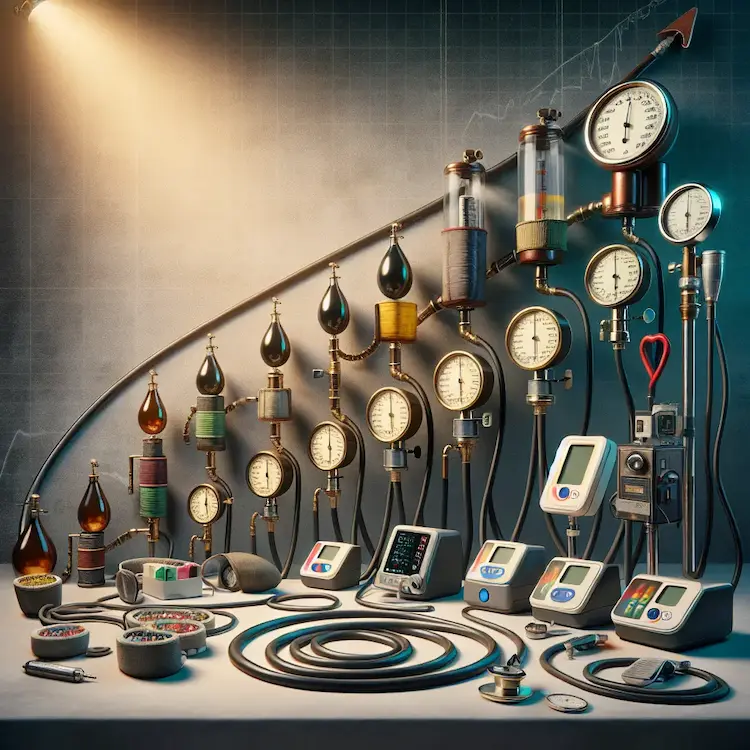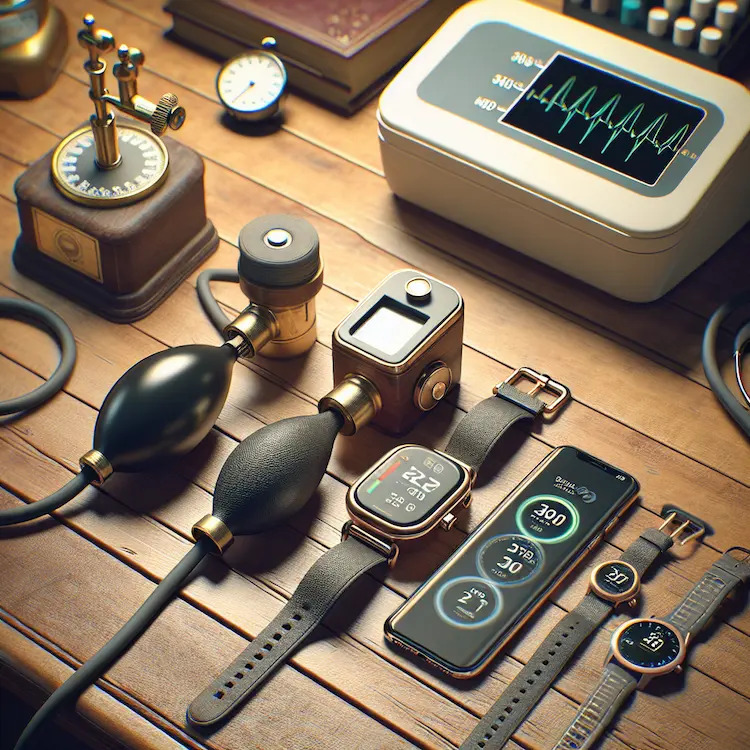Blood pressure measurement is a cornerstone of modern medicine, offering critical insights into cardiovascular health. Its history is a journey of innovation, persistence, and scientific discovery. From primitive techniques to cutting-edge digital monitors, understanding the evolution of blood pressure measurement helps us appreciate its role in healthcare worldwide, particularly in the Philippines, where cardiovascular diseases are a leading health concern.
Origins: Early Attempts at Measuring Blood Pressure
The history of blood pressure measurement dates back to the 17th century. In 1628, English physician William Harvey described the circulation of blood, setting the stage for future exploration. However, it wasn’t until 1733 that Reverend Stephen Hales recorded the first blood pressure reading. Using a glass tube inserted into the artery of a horse, Hales measured the height of the blood column—a rudimentary but groundbreaking method.
The Development of Non-Invasive Techniques
The 19th century saw the development of non-invasive blood pressure measurement methods. In 1896, Italian physician Scipione Riva-Rocci invented the mercury sphygmomanometer, a device that measured blood pressure using a cuff wrapped around the arm. His method laid the groundwork for the modern blood pressure cuff.
Russian physician Nikolai Korotkoff improved the technique in 1905 by introducing auscultatory methods, which involve listening to blood flow sounds using a stethoscope. This innovation enabled more precise measurements and remains the basis for many modern devices.

Evolution of Blood Pressure Measurement Tools
- Mercury Sphygmomanometers: Widely used until the late 20th century, mercury sphygmomanometers provided accurate readings but raised environmental concerns due to mercury toxicity.
- Aneroid Devices: These devices replaced mercury with a mechanical gauge, making them safer and more portable but slightly less accurate.
- Digital Monitors: Modern digital blood pressure monitors offer convenience and automated readings. They are user-friendly and often include features like memory storage and Bluetooth connectivity.
| Device | Accuracy | Environmental Impact | Portability |
|---|---|---|---|
| Mercury Sphygmomanometer | High | High (toxic) | Low |
| Aneroid Sphygmomanometer | Moderate | Low | Moderate |
| Digital Monitors | High | Low | High |
Importance of Blood Pressure Measurement in the Philippines
In the Philippines, cardiovascular diseases, including hypertension, are among the leading causes of mortality. According to the Department of Health (DOH), one in four Filipino adults suffers from high blood pressure. Regular monitoring is essential for early detection and management.
Cultural factors also influence blood pressure trends in the country. Traditional diets high in salt and increasing rates of obesity contribute to rising hypertension cases. Awareness campaigns and accessible healthcare tools are crucial for addressing these challenges.
Practical Advice for Filipinos
- Regular Monitoring: Invest in a reliable digital blood pressure monitor for home use.
- Healthy Lifestyle Choices: Adopt a balanced diet, limit salt intake, and engage in regular physical activity.
- Consult Healthcare Providers: Schedule regular check-ups to ensure accurate readings and professional guidance.

Societal and Economic Impacts
Hypertension management affects societal productivity and healthcare costs in the Philippines. Early intervention reduces the risk of complications like stroke and heart attack, which are significant burdens on families and the economy. Accessible blood pressure measurement tools and widespread education campaigns can save lives and reduce medical expenses.
Modern Trends and Future Directions
Technological advancements are shaping the future of blood pressure measurement. Wearable devices, such as smartwatches with blood pressure monitoring features, are becoming increasingly popular. These tools offer convenience and encourage proactive health management.
In the Philippine context, integrating such technologies into public health initiatives can improve accessibility and awareness. Partnerships between tech companies and healthcare providers can make these innovations more affordable and widely available.
Summary of Key Takeaways
- Blood pressure measurement has evolved from invasive methods to advanced digital monitors.
- Regular monitoring is vital for managing hypertension, especially in the Philippines.
- Lifestyle changes and accessible tools play a crucial role in combating cardiovascular diseases.
- Future innovations, such as wearable devices, hold promise for improving public health.


